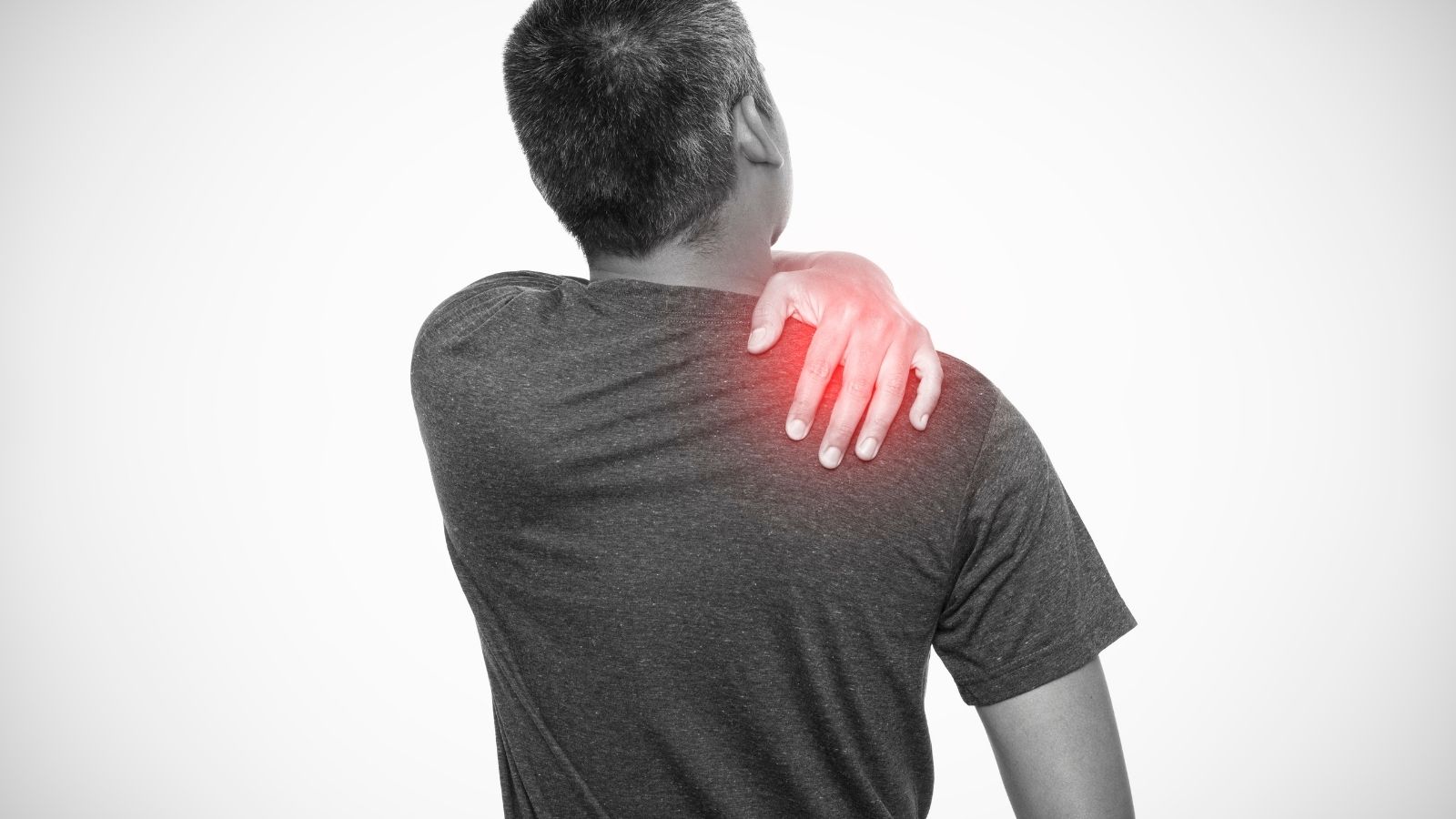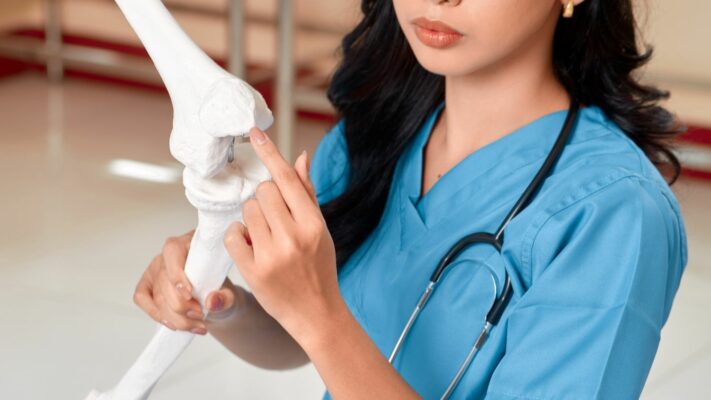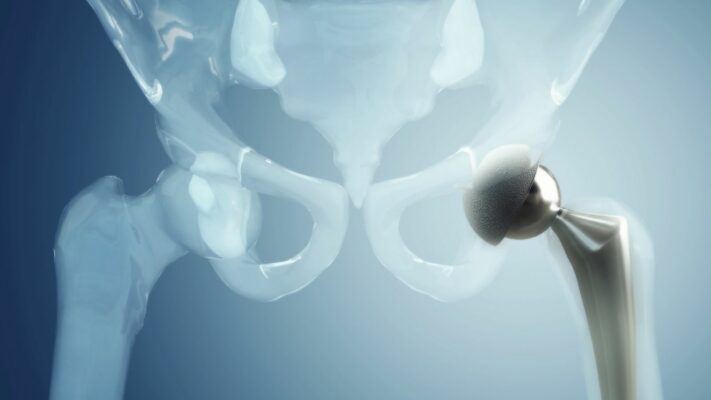Prof. Dr. Murat Demirel, one of the best orthopedic doctors treating SLAP lesions in Ankara, stands out with his expertise in diagnosing and treating tears in the cartilage structure of the shoulder joint called the labrum. SLAP lesions usually occur due to repetitive shoulder movements, sports injuries, or trauma and can cause pain, weakness, and restricted movement in the shoulder. Prof. Dr. Demirel provides personalized treatment plans to his patients in hospitals in Ankara that treat SLAP lesions, using modern arthroscopic surgical techniques and advanced medical equipment in well-equipped centers.
During the treatment process, the most suitable method is determined based on the patient’s age, activity level, and the size of the lesion. After SLAP lesion treatment, he ensures the healing process progresses safely and quickly with medical recommendations, shortening the return to sports. In addition, he provides transparent and up-to-date information about SLAP lesion treatment costs in Ankara, helping his patients make informed decisions. You can also make an appointment immediately to protect your shoulder health, reduce your pain, and regain your mobility.
| Disease Name | SLAP Lesion (Superior Labrum Anterior to Posterior) |
| Affected Area | Upper part of the glenoid labrum in the shoulder joint (biceps tendon junction) |
| Symptoms | Deep shoulder pain, sensation of catching or locking, loss of strength, clicking sound in the shoulder, pain especially during overhead movements |
| Diagnostic Methods | Physical examination (O’Brien, crank tests), MR arthrography, arthroscopy |
| Causes | Repetitive overhead activities, trauma (falling, load on the shoulder), sudden pulling movements |
| Risk Factors | Athletes (especially throwing athletes), heavy lifting, shoulder instability |
| Treatment Methods | Conservative: rest, NSAIDs, physical therapy; Surgical: arthroscopic labrum repair, biceps tenodesis or tenotomy |
| Surgical Options | Arthroscopic SLAP repair, biceps tendon procedures |
| Complications | Incomplete recovery, shoulder stiffness, recurrent pain or instability |
| Recovery Process | 6–8 weeks with conservative treatment; 4–6 months after surgery |
| Prevention Methods | Exercising with proper technique, balanced strengthening of shoulder muscles |
| Follow-Up Process | Monitoring physical therapy progress, MRI may be required |


Prof. Dr. Murat Demirel
Orthopedics and Traumatology Specialist
Orthopedics Specialist Prof. Dr. Murat Demirel was born in Ankara in 1974. He completed his primary education at Ankara Kavaklıdere Primary School and his secondary and high school education at Ankara Atatürk Anatolian High School. Dr. Demirel graduated from Ankara University Faculty of Medicine in 1998 and completed his residency in Orthopedics and Traumatology at Ankara Numune Training and Research Hospital, 1st Orthopedics and Traumatology Clinic, in 2004.
PhD
Ankara University Institute of Health Sciences
Specialization
Ankara Numune Training and Research Hospital, 1st Orthopedics Clinic
Medical School
Ankara University Faculty of Medicine
Yazı İçeriği
What is a SLAP Lesion and Where Does It Occur in the Shoulder?
Let’s take a small journey into our shoulder joint to understand this better. You can think of the shoulder joint as a ball and socket system. The round head of the humerus bone is the “ball,” and the “socket” is the shallow cavity in the scapula called the “glenoid.” However, this socket is shallow enough to allow the ball to move freely. While this gives the shoulder incredible mobility, it also makes it naturally sensitive and prone to dislocation.
This is where the structure called the labrum comes into play. The labrum is a strong and flexible cartilage ring that surrounds the edges of the glenoid socket like a gasket. Its role is to deepen the socket, allowing the head of the humerus to sit more stably. Just like a coaster prevents a glass from sliding, the labrum helps keep the shoulder joint in place.
When we ask what a SLAP lesion is, it refers to a tear in the upper part of this critical labrum ring. The most important feature of this tear is that it occurs at or near the point where the long tendon of the biceps attaches to the labrum like a ship’s anchor. In fact, the term “SLAP” comes from the initials of the English words that describe the tear’s location: Superior, Labrum Anterior, and Posterior. In other words, it is a tear in the upper part of the labrum, extending from front to back.
This region is exposed to significant stress, especially when we raise our arms above our heads or throw something. Therefore, an injury here not only causes pain but also disrupts the biomechanical balance of the shoulder, leading to serious functional impairments.
What Causes a SLAP Lesion?
SLAP lesions usually result not from a single event like “I did this and my shoulder tore,” but from a combination of factors. To better understand these causes, we can divide them into three main categories: acute trauma, chronic overuse, and age-related changes.
Acute Trauma:
This occurs when the shoulder is suddenly exposed to a force greater than it can withstand. Usually, there is a specific incident. Common situations include:
- Falling on an outstretched hand or extended arm
- Taking a direct blow to the shoulder
- Suddenly grabbing onto something to break a fall
- Trying to lift or catch a heavy object suddenly
- Being involved in a car accident
- Experiencing a shoulder dislocation
Chronic and Repetitive Injuries (Overuse):
This is perhaps the most common cause of SLAP lesions. Here, the injury develops gradually over time as micro-damages accumulate from repeating the same movement thousands of times. Just like dripping water forming a lake, the shoulder joint gradually wears down. Those most at risk include:
- Athletes involved in throwing sports such as volleyball, tennis, handball, and baseball
- Swimmers, especially in freestyle and backstroke
- Weightlifters
- Workers who frequently use their arms overhead (e.g., painters, ceiling installers)
Age-Related Degenerative Changes:
Like every tissue in our body, the labrum also loses its flexibility and strength over time. After the age of 40, fraying, thinning, and small tears can occur in the labrum even without a clear injury. This is considered a natural part of the aging process and can sometimes be detected incidentally without any symptoms.
What Are the Symptoms of a SLAP Lesion?
SLAP lesions do not always present in the same way. Symptoms may vary depending on the person and the size of the tear. Sometimes it causes a subtle pain, while other times a noticeable catching sensation in the shoulder may occur. Therefore, SLAP lesion symptoms are often a mix of complaints. The most common symptoms are:
- Dull, insidious pain felt deep in the shoulder or in the upper-front part
- Sharp pain, especially when raising the arm overhead (e.g., reaching for something on a shelf)
- Increased pain during throwing or throwing-like movements
- Catching, locking, or slipping sensations in the shoulder
- Mechanical sounds like “pop,” “click,” or cracking from the shoulder during movement
- Weakness felt in the shoulder and arm
- “Dead arm” syndrome in athletes, where the arm no longer feels strong or controlled
- Inability to sleep on the painful shoulder or pain waking you at night
- A feeling of instability or looseness in the shoulder, as if it might “pop out”
- Difficulty performing certain movements and reduced range of motion
Many of these symptoms can be confused with other shoulder injuries such as rotator cuff tears or shoulder impingement syndrome. Therefore, it is very important to see a specialist who will carefully listen to your complaints and perform a detailed examination for an accurate diagnosis.
Contact us for detailed information and an appointment!
How is a SLAP Lesion Classified?
After diagnosing a SLAP lesion, the next step is to determine the “character” of the injury. For this, lesions are classified. This classification is based on where the tear is located, how large it is, and most importantly, its relationship with the biceps tendon. This serves as a roadmap that guides us in choosing the most appropriate treatment. The most commonly used system is named after the surgeon Dr. Snyder, who first described this tear, and is divided into four main types:
Type I: In this type, there is age-related wear, a kind of fraying, at the upper edge of the labrum. The edges of the labrum have lost their smoothness, but the connection of the biceps tendon to the bone is still intact. It is usually seen in older individuals and may not always be the main source of pain; it is more of a sign of aging in the shoulder.
Type II: This is the most common type we encounter clinically and the one that usually causes the most problems. Here, the upper part of the labrum, along with the attachment site of the biceps tendon, has completely separated from the bone. The anchor of the biceps tendon has shifted. This causes significant imbalance in shoulder mechanics and usually leads to clear complaints such as pain, catching, and weakness.
Type III: This type can be thought of as a “bucket-handle” tear in the labrum. A portion of the labrum has torn and is freely hanging into the joint like a flap. This dangling piece can get caught between the joint during movement, leading to catching and locking. An important feature of this type is that the biceps tendon’s attachment point is intact; the problem lies only in the labrum.
Type IV: This is a more advanced stage of Type III. The “bucket-handle” tear in the labrum extends into the biceps tendon itself. In other words, both the labrum and a portion of the tendon are torn. This is a more complex injury that causes both labrum instability and biceps tendon dysfunction.
Beyond these main types, rarer and more complex types (Types V, VI, VII, etc.) have also been defined, where SLAP lesions coexist with other injuries such as shoulder dislocation. Determining the exact type of injury usually requires arthroscopy (seeing inside the joint with a camera during surgery) and directly shapes the treatment strategy.
How is a SLAP Lesion Diagnosed?
When you present with shoulder pain, making the correct diagnosis is like detective work. Rather than relying on a single test or finding, we piece together multiple clues to reach a conclusion. This process generally involves three main steps:
Listening to You (Medical History – Anamnesis):
Everything starts with what you tell us. This is the most valuable part of the diagnosis. We discuss in detail when and how your complaints began, whether there was trauma such as a fall, what increases or decreases the pain, whether your shoulder makes sounds, and what difficulties you face in daily life or during sports. This helps us narrow down the possible causes.
Physical Examination:
After listening, we perform a detailed examination of your shoulder. The main goals of this examination are:
- Comparing the posture and muscle structure of both shoulders
- Assessing shoulder range of motion with both active (your own) and passive (guided) movements
- Testing the strength of important shoulder muscles such as the rotator cuff
- Performing special tests that provoke SLAP lesions
These special tests aim to apply controlled stress to the upper part of the labrum and the biceps tendon by positioning your shoulder and arm in specific ways. If your complaints reappear during these maneuvers, it strengthens the suspicion of a SLAP lesion. Some of the tests used include:
- O’Brien’s Test
- Speed’s Test
- Yergason’s Test
- Compression-Rotation Test
Imaging Methods:
If your history and physical examination findings suggest a SLAP lesion, we use imaging methods to confirm this suspicion and obtain detailed information about the tear.
X-ray: Usually the first test requested. Although it does not show soft tissues such as the labrum, it provides information about bone structures and helps rule out other possible causes of pain (arthritis, fractures, etc.).
MR Arthrography (MRA): This is considered the “gold standard” method in diagnosing SLAP lesions. Unlike a normal MRI, this procedure involves injecting a special dye (contrast agent) into the shoulder joint beforehand. This fluid distends the joint capsule, leaking into even the smallest labral tears and making them much more visible. MRA provides highly accurate information about the presence, location, and type of tear, which greatly helps us shape our treatment plan.
Are There Non-Surgical Treatment Options for SLAP Lesions?
Yes, absolutely. In fact, in many cases, our first treatment choice for SLAP lesions is non-surgical, meaning conservative methods. Especially if the injury is not very severe, the tear developed through a degenerative process, or the person’s activity level is not very high, trying these methods before surgery is a very reasonable approach that often produces successful results. The aim is to give the shoulder a chance to heal without further stress. Non-surgical treatment usually involves a comprehensive program. The main components of this program are:
- Avoiding activities that trigger pain, especially overhead movements, for a period of time
- Applying ice to the painful area several times a day for 15-20 minutes
- Using anti-inflammatory medications recommended by a doctor to reduce pain and inflammation
- Following a comprehensive and personalized physical therapy program
- Administering intra-articular cortisone injections to rapidly suppress pain in cases of severe inflammation
Among these, physical therapy is undoubtedly the most critical factor for long-term success. Physical therapy not only provides temporary relief but also addresses the underlying causes of the problem. A well-planned SLAP lesion exercise program strengthens the muscles around the shoulder (especially the rotator cuff and scapular stabilizers), restores lost range of motion, and most importantly, corrects faulty movement habits (biomechanical imbalances), thereby eliminating abnormal stresses on the joint.
If, despite 3 to 6 months of regular non-surgical treatment, there is no significant improvement in complaints, or if the type of tear (e.g., unstable Type II) is unlikely to respond to conservative treatment, then surgical options are considered.
What Surgical Treatments Are Used for SLAP Lesions?
If non-surgical methods fail to relieve your pain or if the type of injury and your lifestyle expectations (for example, being an active athlete) make surgery a more reasonable option, then surgery may be planned. Today, almost all SLAP lesion surgeries are performed arthroscopically, meaning by a minimally invasive technique. Instead of a large incision, 2-3 small holes are made around the shoulder, through which a camera and fine surgical instruments are inserted into the joint. This allows for faster recovery and less post-operative pain.
During arthroscopy, the surgeon selects the most suitable technique depending on the type, size, tissue quality of the tear, as well as your age and activity level. The main surgical options are:
Debridement (Cleaning): Trimming and cleaning the torn and frayed labral tissues.
SLAP Repair: Re-attaching the torn labrum to the bone using special suture anchors.
Biceps Tenodesis: Detaching the problematic biceps tendon from the labrum and reattaching it to a different point on the humerus.
Biceps Tenotomy: Detaching and completely releasing the biceps tendon from the labrum.
Debridement is usually performed in cases where the labrum is only slightly worn (Type I) or in age-related degenerative tears, to smooth out unstable edges and eliminate catching sensations.
SLAP Repair is the classic method. It is preferred in young and active patients with unstable Type II tears where tissue quality is good. The goal is to restore anatomy as close to its original state as possible. The torn labrum is fixed in place with tiny screws and sutures placed into the bone.
Biceps Tenodesis is a method that has become increasingly popular in recent years. The rationale here is that pain and dysfunction often stem from the pulling force exerted by the biceps tendon on the labrum. By changing the tendon’s attachment site, this tension is eliminated. It gives very good results especially in patients over 40, those with damage to the biceps tendon itself, or in cases where a previous SLAP repair has failed.
Biceps Tenotomy is the simplest procedure. It is usually performed in older patients with low activity expectations, releasing the tendon to relieve pain. Functionally, it does not cause significant loss.
What is the Recovery Process After SLAP Lesion Surgery?
A successful SLAP lesion surgery is only half the equation. The other half is the post-operative rehabilitation process, which must be followed patiently. This process is a step-by-step journey designed to protect the repair and safely restore shoulder function. Although everyone heals at different speeds, a general roadmap is usually followed.
Phase 1: Maximum Protection Period (First 4-6 Weeks Post-Surgery)
The priority during this period is protecting the repair. Your shoulder is usually kept immobilized with a sling for 4 to 6 weeks.
The goals during this phase are:
- Allow healing of the surgical repair
- Control pain and swelling (with ice and medication)
- Allow only hand, wrist, and elbow movements
- Perform very gentle, passive movements under physiotherapist supervision to prevent stiffness
Phase 2: Regaining Motion (Approximately 6-12 Weeks)
After the sling is removed, you gradually begin to use your shoulder again. The focus during this period is regaining range of motion.
The goals during this phase are:
- Gradually restore normal range of motion
- Start assisted-active and then active movements
- Begin very light isometric exercises to activate shoulder and scapular muscles
- Lifting weights or working against resistance is strictly prohibited
Phase 3: Early Strengthening (Around 3-4 Months)
Since your shoulder now moves more comfortably, it’s time to start strengthening.
The goals during this phase are:
- Fully restore range of motion
- Start light resistance exercises (elastic bands, very light dumbbells)
- Follow an exercise program targeting the rotator cuff and scapular stabilizer muscles
- Improve shoulder endurance and control
Phase 4: Advanced Strengthening and Return to Activity (Approximately 4-6 Months and Beyond)
This is the final and longest phase of recovery. The goal is to prepare your shoulder for the demands of daily life and sports.
The goals during this phase are:
- Gradually increase the difficulty of strengthening exercises
- Start functional exercises simulating sport- or job-specific movements
- For athletes, begin return-to-sport programs (e.g., progressive throwing programs)
Return to full unrestricted activity, especially competitive sports, may take 6 months to 1 year depending on the type of surgery and the individual’s progress. Being patient and strictly following your physiotherapist’s program is essential for a successful outcome.
What Are the Outcomes After SLAP Lesion Treatment?
“If I have surgery or physical therapy, will my shoulder be as good as before?” This is the most common question for anyone facing a SLAP lesion. The answer is not a simple yes or no; outcomes depend on many variables and each individual’s story is different. However, we can outline a general framework.
The main goal of treatment is to achieve a painless, stable, and functional shoulder. The vast majority of patients reach this goal after the right treatment (whether non-surgical or surgical) and a good rehabilitation process. They can perform daily activities comfortably, sleep without pain at night, and get rid of the constant discomfort in their shoulder. Patient satisfaction is generally very high.
When it comes to returning to sports, the situation is more complex. The expectations and stress on the shoulders of someone who plays tennis as a hobby on weekends and a professional volleyball player are not the same. An office worker who completes non-surgical treatment usually continues life without problems, while it may be more challenging for an athlete to reach the same performance level.
Elite athletes engaged in overhead throwing sports such as volleyball, baseball, and tennis represent the most challenging patient group. The extreme stress placed on their shoulders makes full recovery and a 100% return to pre-injury performance levels difficult. Studies show that about 70-80% of athletes can return to sports after surgery, but this rate can be slightly lower for throwers. Sometimes an athlete may return to the sport but may not be able to serve as fast or as frequently as before.
Other important factors affecting outcomes include age (younger patients heal better), the cause of injury (tears from sudden trauma usually have more predictable outcomes), and whether there are other accompanying shoulder problems.
Most importantly, having realistic expectations is key. Treatment does not “reset” your shoulder but aims to significantly improve your quality of life by eliminating pain and restoring function. Being patient and working in harmony with your treatment team is the key to achieving the best outcome.
Contact us for detailed information and an appointment!




